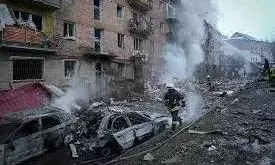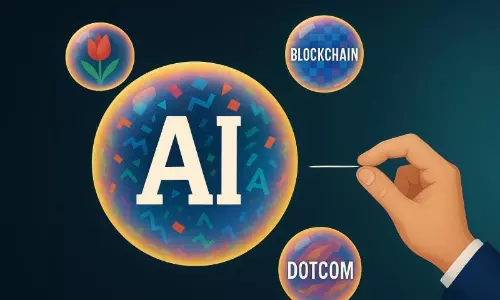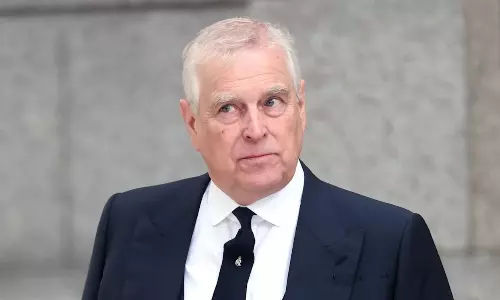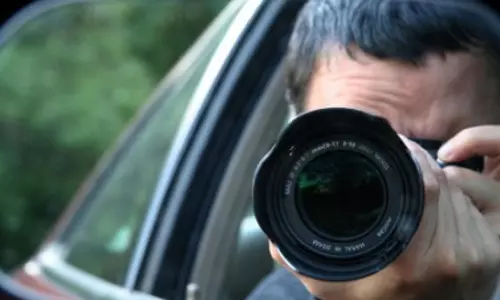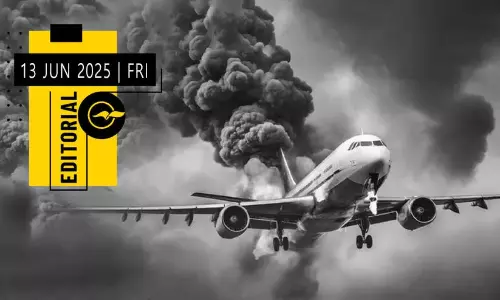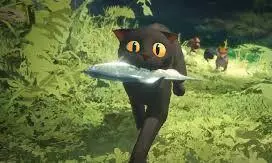
Without words, Flow talks about ‘Presence!’
text_fieldsFlow felt like a rare cinematic sanctuary! An animated meditation which reminds that cinema, at its purest, isn’t about escape - but rather an awakening. The Latvian director Gints Zilbalodis has crafted a wordless, post-apocalyptic fable so serene and immersive that it feels like a meditation on survival. No dialogues, no forced banter, no manipulative soundtracks- just a cat, a flood, and the fragile beauty of existence. The film was released on 28th February 2025 and was premiered in the Un Certain Regard section at Cannes on May 22, 2024 before its Latvian theatrical release. It made history as the country’s highest-grossing film ever while achieving unprecedented critical success, becoming Latvia’s first Oscar-winning film (Best Animated Feature) and nominee (Best International Feature Film), in addition to winning the Golden Globe for Best Animated Feature Film. The movie was crafted over five-and-a-half years (2019–2024) using the open-source software Blender, bypassing traditional storyboards to allow for organic, improvisational animation- resulting in a film so precisely made, that not a single scene was cut.
The opening frame gives us a feel that we are in a watercolour painting, as the film breathes with translucent hues, where floods bloom across the screen like ink in the water, and every shadow bleeds into light as if the world itself is being painted anew in real time. A dark grey but seemingly black cat, which looks thoughtful rather than being cute, is the one whom we follow through the whole cinematic journey. The cat walks through a serene riverside with big sculptures covered in moss. It gives us a hint that the land has been abandoned for years. It takes refuge in a home where we see many unfinished artisanal woodworks indicative of how the human presence has completely vanished from those surroundings. Slowly the things take a turn, when the cat encounters a group of dogs who fight over a fish and chases the cat who could barely escape. But it witnesses a deafening deer stampede and understands that something disastrous is going to happen. Then comes the flood silently claiming everything around and slowly the whole place started sinking until the cat takes a refuge on a huge statue over there. The tension mounts as the water ascends until a small sailboat appears and surprisingly as the ‘Noah’ the lifesaver we meet a capybara inside.
The next morning, we start sailing with them through the partially submerged forest.. We meet a white secretary bird which tries to abduct our cat, we meet a mutated whale which saves the cat from drowning, we meet ring-tailed lemur with its baskets of trinkets, and finally we meet the Labrador an old acquaintance before the flood. The crew’s boat drifts into the shadow of the half-submerged city, its skeletal towers jutting like broken teeth between the stone pillars. There for once their boat gets stuck on a tree only to see the helping hands of the whale coming and saving them in beauty. The cat - now sleek as an otter after the capybara’s patient coaching - darts beneath the surface, emerging with a silver fish clenched in its jaws. This moment gives us happiness as we learn together with the cat to survive in a world where we don’t have any hold. As we flow together with this group of animals we learn that language is just a group of signs and signifiers that man has created out of the luxury that life has offered to him. Here, Existence means different ….
As the boat battles stormy waves between the towering stone pillars, the secretary bird suddenly takes flight- wings slicing through the rain. In the chaos, the cat is thrown overboard. It fights the churning water, barely reaching shore, then climbs the crumbling stairs of a pillar. At the top, the secretary bird stands on an ancient labyrinth carved into the stone.
Then silence. Gravity vanishes.
A blinding portal tears open above them. The cat floats helplessly, paws scrambling at the air, while the secretary bird soars toward the light… and vanishes. We see life parting with life.. we feel pain in the eyes and heart … we feel the cat, we feel the life, we feel without words, without chaos, we feel in silence.
The film emerges as a luminous portal into the very essence of being. From its opening frames -where morning mist curls like breath over a primordial river, the viewer is gently untethered from ordinary perception and drawn into a meditative journey that feels both deeply personal and universally profound. The absence of dialogue is a liberation in Flow allowing the film to communicate in a language deeper than words: a glance between animals, the tension in a predator’s pause, the quiet determination of creatures chasing a world both beautiful and unforgiving. Yes, the narrative prioritizes atmosphere over exposition, and we don’t get deep backstories for its animal protagonists. But that’s the point. These creatures aren’t anthropomorphized-they simply are, moving through their world with an instinctual presence that feels like a silent rebuke to human busyness.
The film’s most revolutionary act may be its quiet dismantling of human exceptionalism. In one unforgettable sequence, a cat pauses at a riverbank - not to drink, but simply to watch the water flow. This moment, devoid of anthropomorphism, becomes a master class in presence. At times we feel like rereading Derrida, his essay titled ‘The Animal That Therefore I Am’ where he emphasizes the way in which “zoe” or animal life has come to mean a life of suffering, and his first concern as philosopher on “bios” - the biography or meaning that humans give to themselves.
As we observe closely, this film brilliantly manipulates temporality to mirror its themes. Time-lapse sequences of trees submerging in the water unfold with geological patience, while moments of journey through human made walls and buildings are captured in fleeting, almost impressionistic glimpses. This temporal dance culminates in the film’s transcendent final act- where the camera becomes water itself, flowing from mountain springs to urban drainage pipes and finally to the endless waters. As perspective dissolves into the infinite, so too does the illusion of separation. It talks about the apocalyptic realities, it talks about the loops of earthly lives, it talks about being in love with your present, it talks about care, empathy and co-existing but all in silence…. Each shot is composed with such reverence for light, texture, and movement that nature itself becomes the narrator long after the screen fades to black, its current continues to pull you inward, toward something wordless, timeless, and true. When the cat thinks and delineates, like the loop of the deer stampede and the flow of fishes around, the plea to help the stranded dogs, we unlearn what we have inhibited, we understand that beauty has other versions and we experience our own heartbeat syncing with the flow.
Ultimately, Flow doesn’t demand your attention with bombast or manipulation. It earns it through silence, patience, and emotional honesty. It’s the kind of film that lingers-not because of a twist or a climactic showdown, but because it leaves room for you to feel, to see the world, and your place in it, a little differently. It doesn’t rush you or force meaning on you. Instead, it holds space for whatever you bring to it. In its quiet moments, you might see pieces of yourself. In its storms, maybe you’ll find something you needed to feel. Flow is soothing and beautiful.




